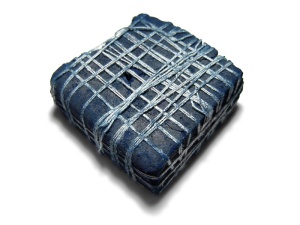Did you know that there are a seemingly endless numbers of colors of indigo?
The use of natural dyes involves the identification, collection, cultivation and conservation of dye plants, the use of chemistry, including natural mordants/fixatives, fermentation, the art of dyeing, and in many cases, an understanding of local customs and the historical context. Dye plants are often studied along side medicinal plants. In addition to plants, invertebrates and minerals are used sources for dyes. Authentically STEAMy, right???
Here’s link to a nice, older article on the topic, including diagrams some important flavonoid dyes: http://userwww.sfsu.edu/msequin/JCE1981ChemofPlantDyes.pdf
And here’s another to the Facebook page of textile artist Hisaki SUMI. Check out her absolutely gorgeous images! (Thanks, Tani!): https://www.facebook.com/pages/Science-Art-of-Natural-Dyes/129463670414005



You must be logged in to post a comment.